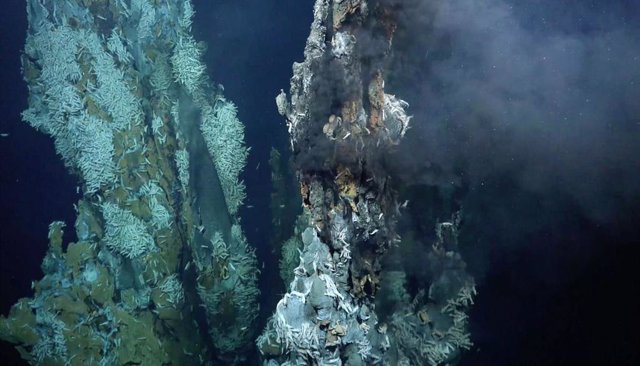24 Apr. (EUROPE PRESS) –
Three new hydrothermal vent fields have been located in a stretch of 700 kilometers the Mid-Atlantic Ridge during an expedition on a research vessel.
The multidisciplinary scientific team — representing 11 institutions from the United States, Canada, and France — used remotely operated and autonomous underwater vehicles that resulted in 170 square kilometers of seabed mapped to a scale resolution of one meter, an area roughly the size of the island of Manhattan.
The discovery of the active hydrothermal vents is the first in this section of the world’s longest underwater mountain range, the Mid-Atlantic Ridge, in more than 40 years. One of the vent fields discovered was located on the Puy des Folles volcano and has five active sites in 18 square kilometers. High-temperature “black smokers” vents were also found in the Grappe Deux vent system and the Kane Fracture Zone.
“This cruise exceeded expectations with the discovery of so many amazing hydrothermal vents teeming with life,” said it’s a statement Dr. Jyotika Virmani, Executive Director of the Schmidt Ocean Institute. which operates the ship Falkor.
The Mid-Atlantic Ridge is a target area for deep sea mining and is located in international waters. All activities related to mineral resources in the area are regulated by the International Seabed Authority, established by the United Nations. The ISA is currently considering whether to allow deep sea mining.
Active hydrothermal vents are rich in deposits of metal sulfides, minerals often associated with copper and zinc.. When exploring the vents for the first time, scientists found rich biological communities. The vents were teeming with marine life, including massive swarms of vent shrimp and a rare sighting of large-fin squid. Many species found in vents live off chemical energy (chemosynthesis) rather than energy from sunlight, It doesn’t go to those depths.
Scientists are still learning how these ecosystems work and the role they play in the carbon cycle on our planet. The impacts that deep-sea mining would have on hydrothermal vent ecosystems are unknown, and the discovery of active marine life underscores the need for more research to understand the effects.
The inaugural 40-day expedition on the R/V Falkor (also) began in March. The new vessel will be used for global ocean exploration, focusing on a new region of the world each year. The next expedition began on April 17 exploring deep-sea corals.















